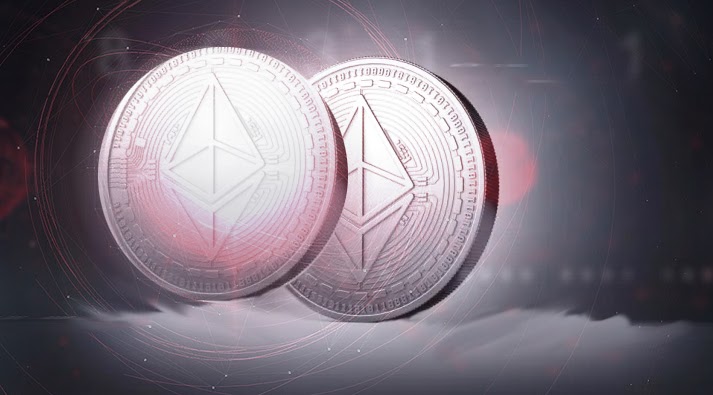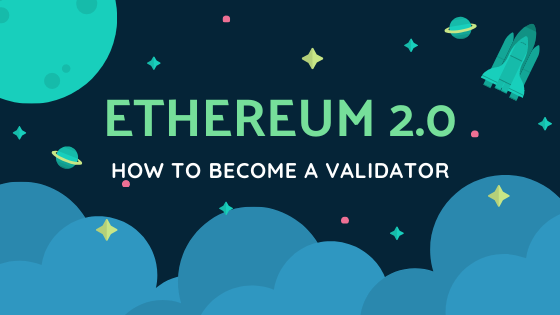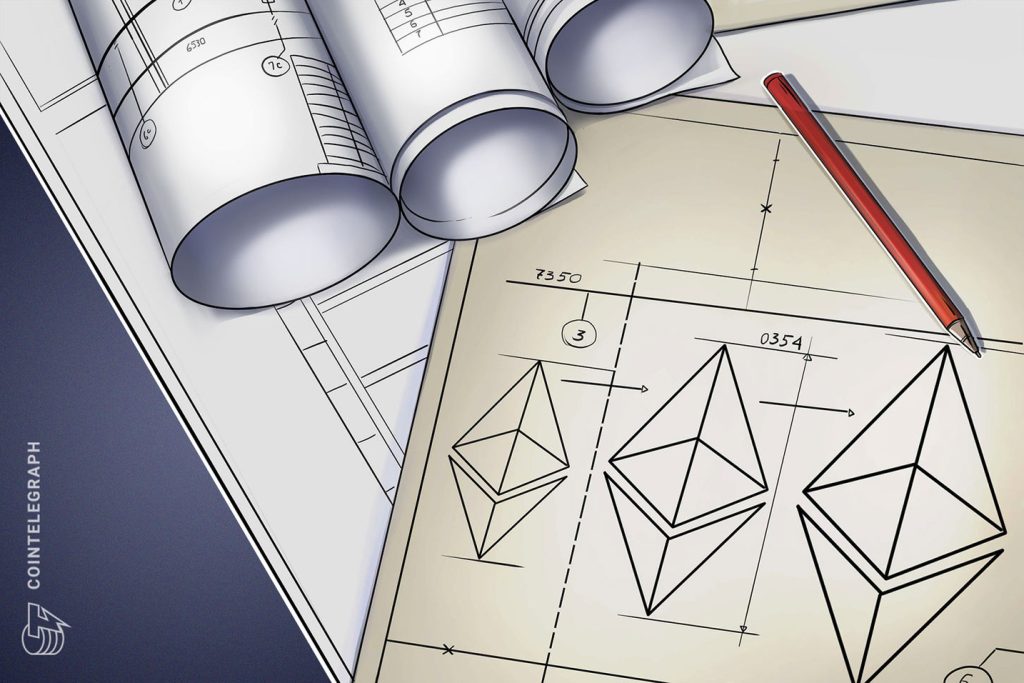Ethereum 2.0, also known as “Serenity,” is a significant upgrade that aims to make the world’s second-largest crypto project faster, more efficient, and more scalable by migrating the network from a proof-of-work to a proof-of-stake system.
The Ethereum 2.0 upgrade is rolling out in multiple phases. Dubbed “Casper,” Ethereum’s new proof-of-stake (PoS) system involves network users locking up their coins to become network contributors instead of using expensive, energy-intensive mining equipment. Each staker is required to lock up 32 ethers or to join a staking pool and combine their ether with others to participate in creating new blocks on the Ethereum PoS blockchain.
A historic overhaul of the second-largest blockchain network is complete, but questions remain.
Ethereum, the second-largest blockchain network, transitioned to a new system for processing transactions on Sept. 15, 2022. The network’s shift from proof-of-work (PoW) to proof-of-stake (PoS) has been years in the making; however, shifting timelines, mixed plans, and mixed messages from Ethereum’s core developers have raised fundamental questions about what it all means.
Will Ethereum fees decrease? Will the price of ether (ETH), the network’s native currency, increase? Why should I even care?
What is the Merge?
The Merge represents the Ethereum network’s shift to proof-of-stake (PoS), its new system (also called a “consensus mechanism”) for authenticating crypto transactions. The new system replaces proof-of-work (PoW), the more power-hungry mechanism pioneered by Bitcoin.

Why is it called a Merge?
Ethereum already has a PoS network called the Beacon Chain (introduced in 2020), but it is not yet used for processing transactions. For now, it’s essentially just a staging area for computers operating the Ethereum network to prepare for the PoS upgrade.
Ethereum’s complete transition to PoS requires merging the Beacon Chain (called the “Consensus” layer) with Ethereum’s PoW mainnet (the “Execution” layer).
How does proof-of-stake (PoS) differ from proof-of-work (PoW)?
Proof-of-stake (PoS) and proof-of-work (PoW) differ in how they decide who has the right to record the next “block” of transactions on the network.
In today’s PoW system, Ethereum miners compete to publish blocks by racing to solve cryptographic puzzles, much like in Bitcoin.
In the upcoming PoS system, validators that stake (lock up) at least 32 ether (~$50,000) with the network are randomly selected to create blocks. The more ether one stakes, the more likely one is to be selected.
In both systems, the miner/validator that wins a block is rewarded with a mix of transaction fees and newly minted ether (ETH). PoS validators also receive rewards for other activities to help secure the network.
When did the Merge happen?
On Sept. 15, 2022, at 6:43 a.m. UTC.
The Merge didn’t have a hard date, and time it would finally occur. Here’s why: each block on Ethereum’s PoW network carries a difficulty number representing how hard miners must work to add it to the network. Instead of kicking in at a specific date, the Merge was scheduled to take effect once the cumulative difficulty of all mined Ethereum blocks hits a particular number – the “total terminal difficulty” (TTD).
In August, Ethereum’s core developers set the TTD at 58,750,000,000,000,000,000,000, which was reached Sept. 15.

Is proof-of-stake better than proof-of-work?
There are trade-offs.
According to the Ethereum Foundation, the nonprofit that funds Ethereum ecosystem development, PoS will cut Ethereum’s energy usage by around 99.95%. PoS advocates also argue that PoW mining centralizes control in the hands of those who can afford to buy fancy crypto mining rigs.
They say PoS – which hands network control to those who “stake” crypto with the network – makes attacks economically infeasible and self-defeating.
PoW proponents counter that PoS staking carries its own centralization and security risks, making it possible for malicious actors to directly “buy” control of the network. They also point out that PoS is a less battle-tested system than PoW, which has proven resilient as the backbone of the two largest blockchain networks.
Will Ethereum fees decrease after the Merge?
No.
Ethereum transaction fees are not expected to change due to the Merge. Future network updates, like danksharding and proto-danksharding, may help address Ethereum’s high network fees, but these updates are not expected until 2023.
The main salve for Ethereum’s transaction fee woes remains rollups – third-party networks like Arbitrum and Optimism bundle up transactions and process them separately from Ethereum’s mainnet.
Will Ethereum transaction speeds increase after the Merge?
Barely.
On average, Ethereum blocks are issued once every 13 or 14 seconds in today’s PoW system. After the Merge, PoS blocks will be issued in regular 12-second intervals. This is not an improvement that most users will notice. It still places Ethereum behind rival blockchain networks like Solana and Avalanche (though well ahead of Bitcoin, where a new block is mined every 10 minutes on average).
Like with transaction fees, those looking for improved transaction speeds need to look to Ethereum’s third-party rollups.
Will the Merge increase the price of ether (ETH)?
It’s hard to say.
With so many variables and unknowns, it is impossible to predict what will happen to Ethereum’s token price due to the Merge.
The Ethereum community has for years positioned the Merge as a massive upgrade to the network’s core technology. Along with addressing concerns about the network’s environmental impact, PoS will introduce a new form of utility for Ethereum’s native ether (ETH) token in the form of staking. It will also decrease the rate at ETH is issued, which could be a boon for its price.
But not everyone is sure that the Merge will boost the price of ETH. The upgrade may already be priced-in by the market. There is also a risk (however small) that the Merge will run into hiccups or that PoS will prove less secure than PoW in the long run.

Can I become an Ethereum validator or staker?
Yes, if you have some ETH.
Yes, you can “stake” 32 ether and earn rewards. We’ve got a detailed explainer on staking ETH here.
Staking requires some know-how; if you screw up or go offline, your stake can be “slashed” (i.e., reduced).
Those with less blockchain expertise can stake via centralized services like those offered by Coinbase (COIN) or Kraken. In addition to handling the technical nitty-gritty, these services – in exchange for a cut of users’ rewards – open up staking to those with less than 32 ETH.
Also popular for those with less than 32 ETH are liquid staking pools like Lido and Rocket Pool. When users stake via these services, they are handed “staked ETH” tokens which trade at a slight discount to regular ETH.
What is happening to staked ether after the Merge?
Staked ether will stay locked up with the network until around six to 12 months after the Merge.
At that point, those who have staked ether themselves will be able to withdraw their stake, along with whatever rewards it has accrued.
Those who stake via centralized staking services or pools need to keep an eye out for announcements on how withdrawals will be handled.
Do Ethereum users or ETH holders need to take action now that the Merge has happened?
No.
If you hold ether (ETH) today, you won’t need to claim new “PoS ETH” or “ETH2” tokens. Your balance will remain the same after the Merge, and you’ll be able to resume using the network as if nothing has changed.
While Ethereum users will not need to take any action come to the Merge, Ethereum software providers and node operators (the computers operating the Ethereum network) will need to update their software to ensure they communicate with the latest version of the network.
What’s all this noise about PoW “forks”? Will I receive free coins if I hold ETH?
Some Ethereum miners, reluctant to let go of the network’s old consensus mechanism, announced plans to “fork” or form a splinter network from Ethereum’s PoW chain. From what we can tell, these miners intend to just clone the main blockchain – balances and all – and continue operating their PoW versions of Ethereum post-Merge. As of Sept. 16, it’s not going great.
If you hold ETH before the Merge, you may automatically receive a balance of tokens on these new PoW forks. The process of claiming these tokens will differ depending on the chain. If you hold ETH on a centralized exchange like Coinbase, the exchange will need to list forked tokens for you to claim your share (and it’s not clear if they will).
But buyers beware. Some forked ether tokens might have value immediately following the Merge, but leaders in the Ethereum community warn that PoW Ethereum forks will just be thinly-veiled cash grabs.
Did the Ethereum network “pause” for the Merge?
No.
The Merge happened instantaneously after the final PoW block was mined. From that point forward, the network continued to operate with the issuance of the first PoS block.
Ethereum users do not need to take any action to upgrade to the PoS chain.

What’s on the Ethereum roadmap after the Merge?
After the Merge, Ethereum’s core developers will continue working on the open-source network as they did before, with improvements to network fees, speeds, and security slated for the months and years ahead.
One focus for developers post-Merge will be sharding, which aims to expand Ethereum’s transaction throughput and decrease its fees by spreading network activity across several “shards” – almost like lanes on a highway. (Updates of this sort were initially slated to accompany the Merge – originally called “Ethereum 2.0,” or “ETH2” – but were deprioritized with the success of third-party rollups at addressing some of the same problems).
Also on the roadmap is enshrined proposer builder separation (PBS), which will separate the “builders” that add transactions to blocks from the “proposers” who put them forward for approval from the more comprehensive network. PBS is pitched as a way to help tackle Ethereum’s maximal extractable value (MEV) problem.
What happens to proof-of-work miners post-Merge?
After the Merge, Ethereum miners – many of whom have invested in fancy mining-optimized computers – will be unable to mine new blocks on the network. Many miners will abandon mining and “stake” ether to earn rewards on the PoS network.
For those who wish to put their mining hardware to continued use, they’ll need to move to another proof-of-work network, like Ethereum Classic.
Some miners also plan to create a “forked” version of the proof-of-work blockchain – a clone of the blockchain that still runs using the old miner-friendly system. It is unclear whether these chains will gain enough traction to become lucrative for miners in the long term.
Source
https://www.coindesk.com/price/ethereum/
Disclaimer
Although the material contained in this website was prepared based on information from public and private sources that ampraider.com believes to be reliable, no representation, warranty, or undertaking, stated or implied, is given as to the accuracy of the information contained herein, and ampraider.com expressly disclaims any liability for the accuracy and completeness of the information contained in this website.

